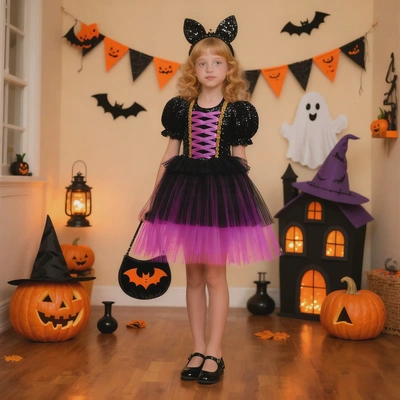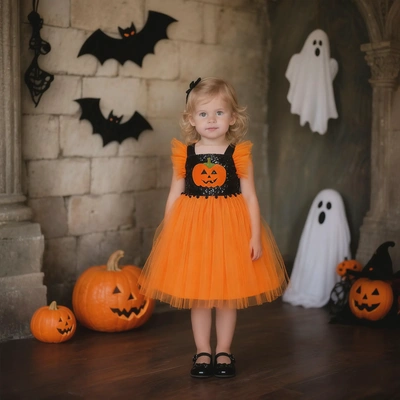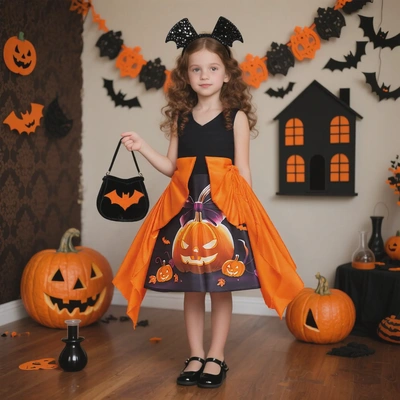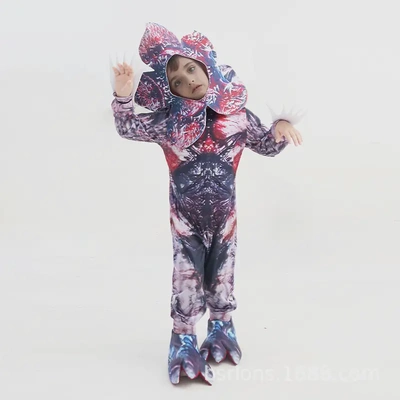How to Choose the Perfect Halloween Costume for Kids: A Parent's Guide to Safety & Fun
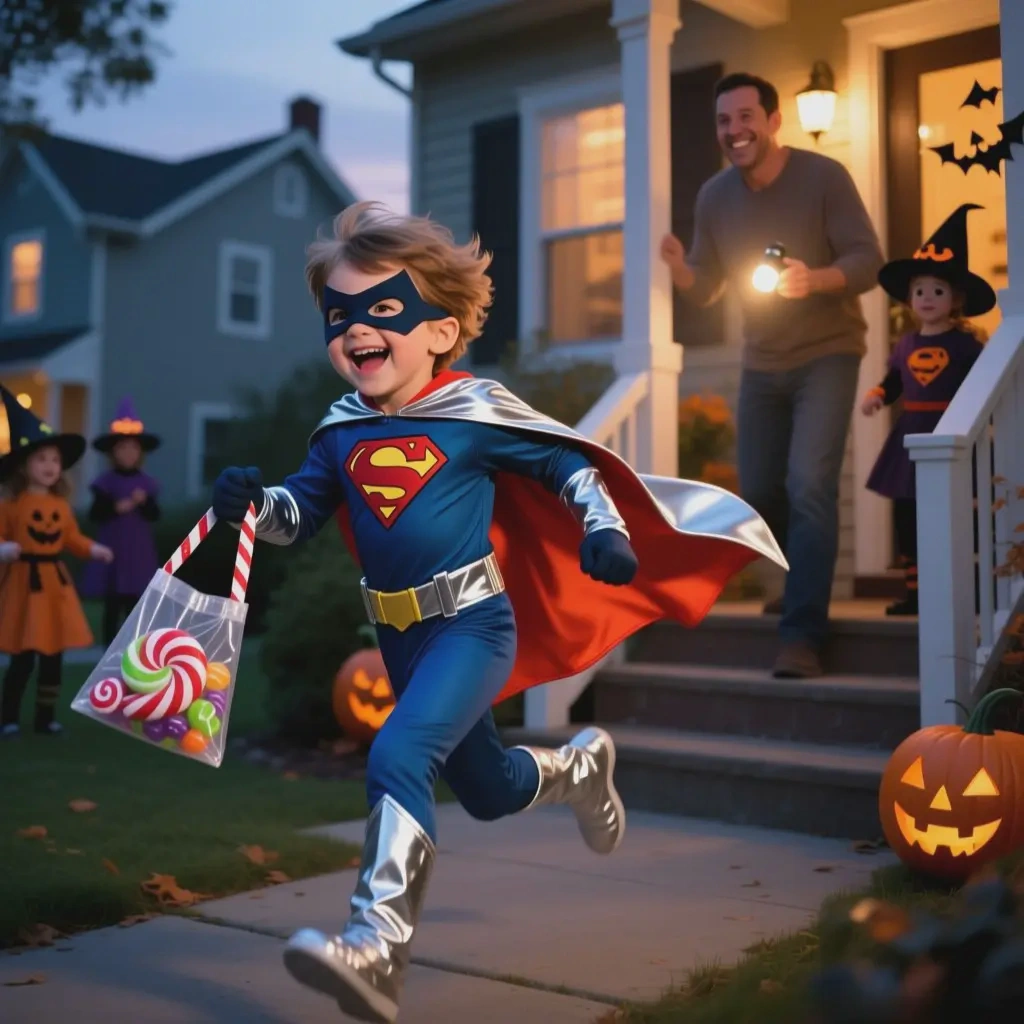
Choosing the perfect Halloween costume for your child involves much more than picking their favorite character. The ideal costume strikes a delicate balance between their wildest dreams and your very real concerns about safety, comfort, and practicality. This comprehensive guide will help you navigate the selection process to find a costume that creates magical memories without the frights.
Discover how to select Halloween costumes that prioritize safety while maximizing fun. Learn about age-appropriate choices, visibility considerations, material safety, and creative solutions that work for toddlers through tweens.
Finding that perfect costume requires considering multiple factors - let's explore how to make choices that keep everyone happy and safe.
What Defines a Truly "Perfect" Kids' Costume?
How to Match Costumes to Your Child's Interests?
What Safety Features Are Non-Negotiable?
How to Choose by Age Group?
Should You Make or Buy the Costume?
What Defines a Truly "Perfect" Kids' Costume?
The perfect Halloween costume for a child isn't necessarily the most elaborate or expensive one. It's the costume that successfully balances four key elements: the child's excitement, parental peace of mind, practical functionality, and budget considerations.
A successful costume combines safety, comfort, age-appropriateness, and that magical element that makes your child's eyes light up with excitement.
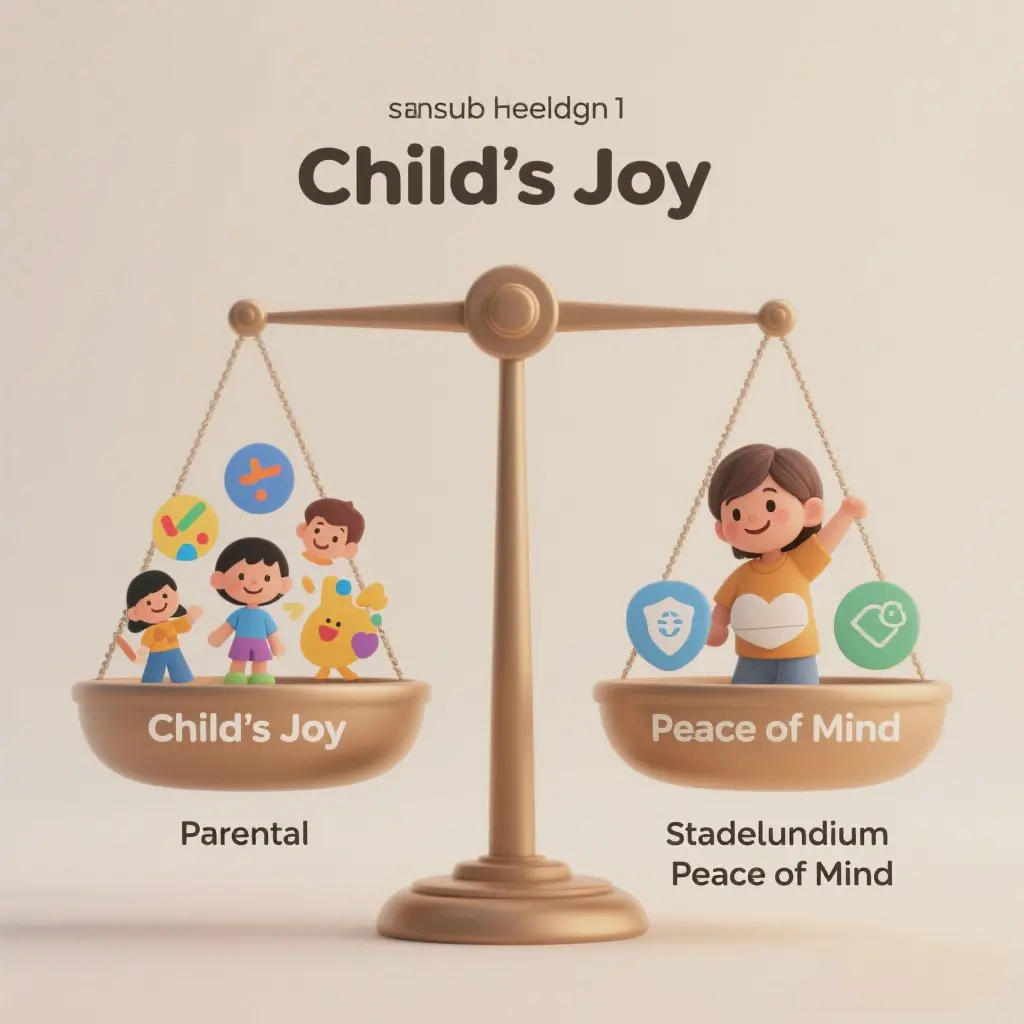
According to child development experts at the American Academy of Pediatrics, the ideal costume supports a positive Halloween experience by ensuring physical safety while encouraging imaginative play. The perfect costume should allow for full mobility (tested by having children walk, run, and climb stairs), maintain body temperature without causing overheating, and withstand the rigors of active trick-or-treating. Research shows that costumes that are too restrictive or uncomfortable are abandoned early in the evening, cutting short the Halloween fun. The best costumes enhance rather than hinder the experience.
How to Match Costumes to Your Child's Interests?
The most beloved costumes often stem from a child's genuine passions and interests. By observing what truly captivates your child, you can select a costume that feels personally meaningful and exciting to wear.
Whether your child loves adventure, fantasy, or animals, countless costume possibilities can bring their current interests to life in a safe, wearable way.
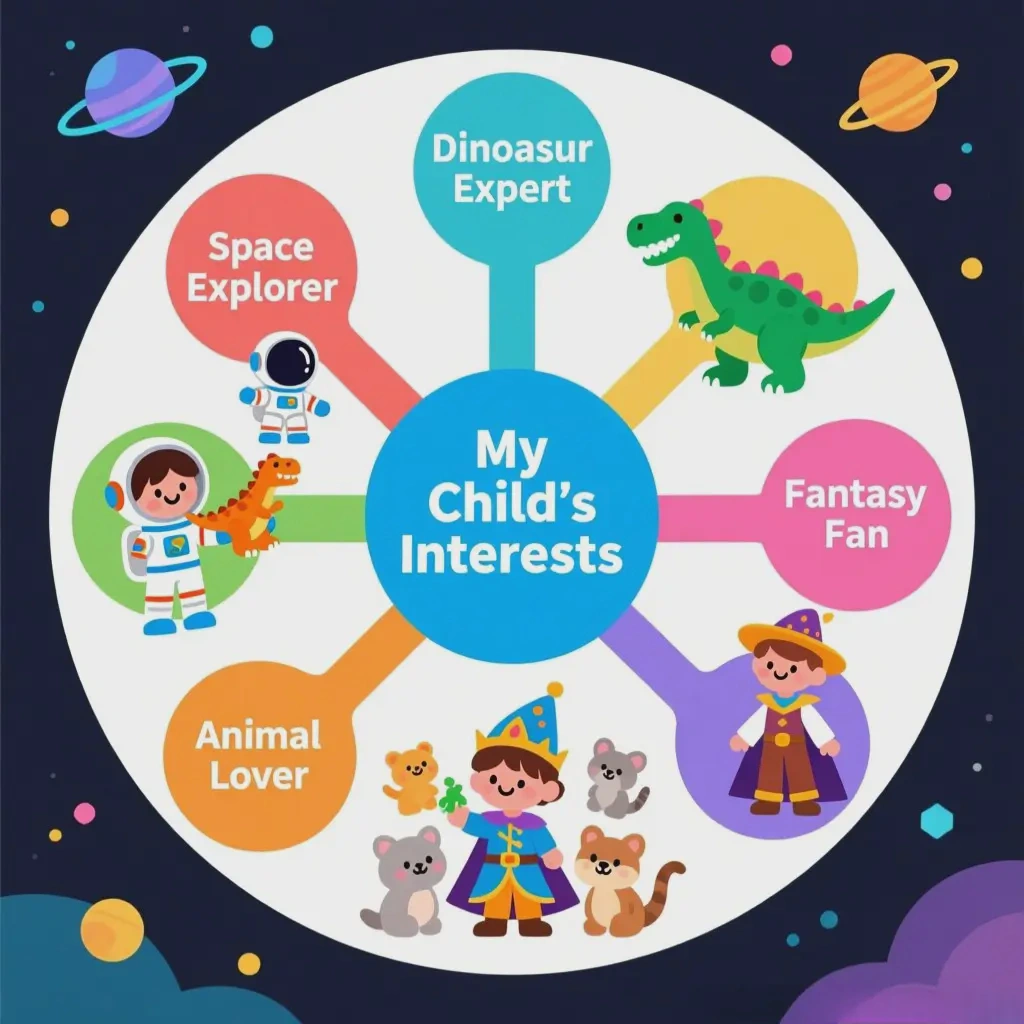
Consider these interest-based categories:
For The Little Adventurer:
Pirates, astronauts, archaeologists, or explorers
Focus on comfortable fabrics and good footwear
Include props like cardboard telescopes or treasure maps
Ensure props are lightweight and safe for waving
For The Fantasy Lover:
Princesses, knights, fairies, or wizards
Choose breathable fabrics for flowing costumes
Opt for velcro closures for easy bathroom breaks
Select wands or swords made of foam or flexible plastic
For The Animal Enthusiast:
Favorite zoo animals, pets, or prehistoric creatures
Choose lightweight ears/headpieces that don't obstruct vision
Consider onesies for warmth and comfort
Avoid full-face masks that limit visibility or breathing
Child psychologists note that costumes reflecting a child's genuine interests often lead to more sustained imaginative play and greater overall enjoyment of the Halloween experience.
What Safety Features Are Non-Negotiable?
While creativity and fun are essential, safety considerations must form the foundation of any costume decision. Overlooking these elements can turn a magical night into a dangerous situation.
Key safety priorities include visibility, flame resistance, proper fit, and careful accessory selection to prevent accidents and injuries.
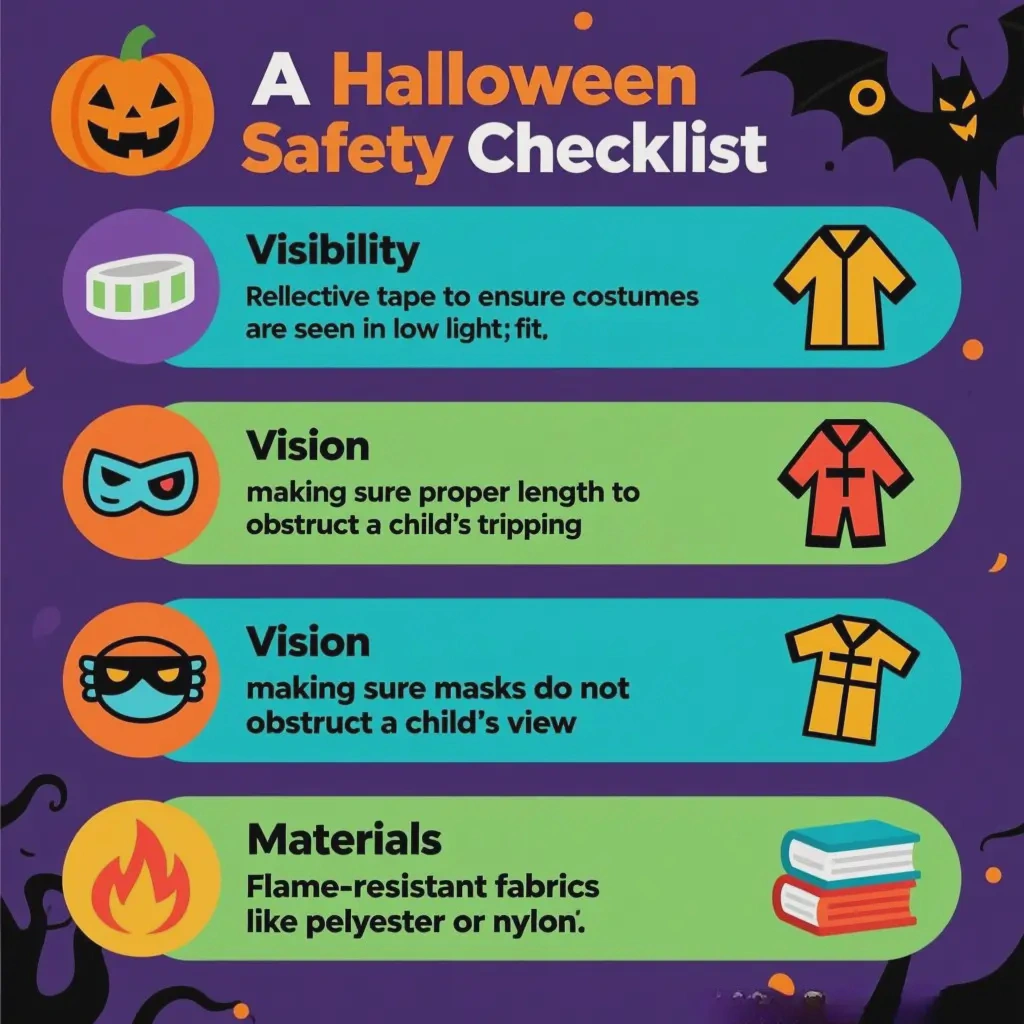
The U.S. Consumer Product Safety Commission highlights these critical safety features:
Visibility Enhancements:
Add reflective tape to costumes and candy bags
Choose light-colored costumes or incorporate bright elements
Provide glow sticks or flashlights
Avoid dark costumes without reflective elements
Fit and Mobility:
Ensure hems are above the ankles to prevent tripping
Test arm and leg movement range
Avoid oversized shoes or slippery footwear
Check that vision isn't obstructed by masks or headpieces
Material Safety:
Look for flame-resistant labels on all costumes
Avoid loose, flowing fabric near jack-o-lanterns
Choose hypoallergenic face paints tested for sensitive skin
Ensure any electronics use cool, battery-operated lights
Statistics show that proper visibility measures can reduce pedestrian accidents by up to 85% during nighttime trick-or-treating, making this one of the most crucial safety considerations.
How to Choose by Age Group?
Children's capabilities and needs vary dramatically by age, making a one-size-fits-all approach to costume selection ineffective. Understanding developmental stages helps you choose costumes that work with your child's abilities rather than against them.
From wobbly toddlers to independent tweens, each age group presents unique considerations for costume safety, comfort, and engagement.
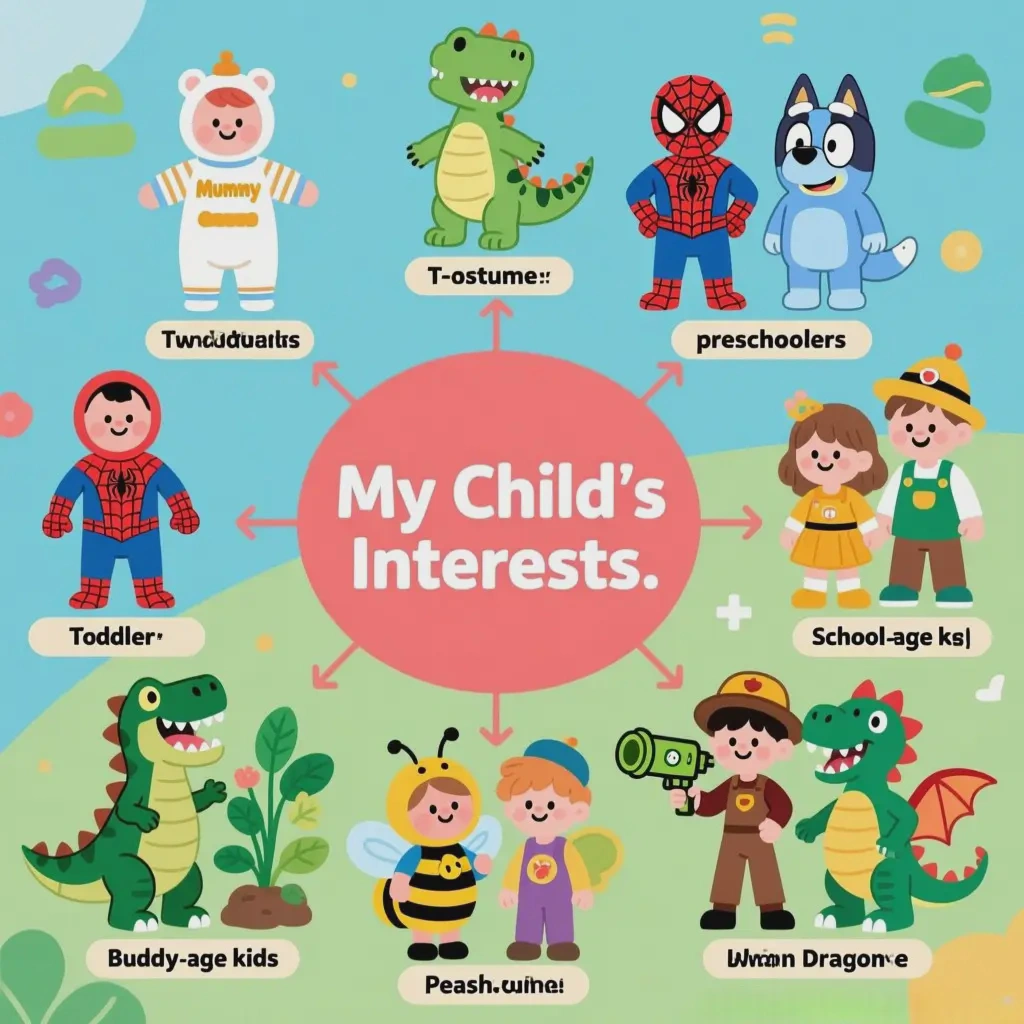
Follow these age-specific guidelines:
Toddlers (1-3 Years):
Prioritize warmth and comfort above all else
Choose one-piece outfits that won't slip or tangle
Avoid any small detachable parts (choking hazards)
Ensure the costume doesn't impede walking or crawling
Best options: Simple animal onesies, pumpkin outfits, soft character costumes
Preschoolers (3-5 Years):
Select costumes of favorite recognizable characters
Ensure easy bathroom access with velcro or elastic waists
Choose face paint instead of vision-obstructing masks
Incorporate their growing interests and friendships
Best options: Storybook characters, friendly animals, community helpers
School-Age Children (5-10 Years):
Involve them directly in the selection process
Balance detail with comfort for extended wear
Consider group costumes with friends or siblings
Add creative accessories that can help make
Best options: Superheroes, historical figures, detailed animal costumes
Tweens (10-12 Years):
Respect their desire for more sophisticated costumes
Encourage DIY elements for personal expression
Discuss appropriate costume choices together
Consider group themes with friends
Best options: Pop culture references, classic monsters, creative mashups
Should You Make or Buy the Costume?
The decision between creating a homemade costume or purchasing a ready-made one involves weighing factors like time, budget, skill level, and your child's specific desires. Both approaches offer distinct advantages.
DIY costumes allow for complete customization and can be more budget-friendly, while store-bought options save time and often provide professional-looking results.
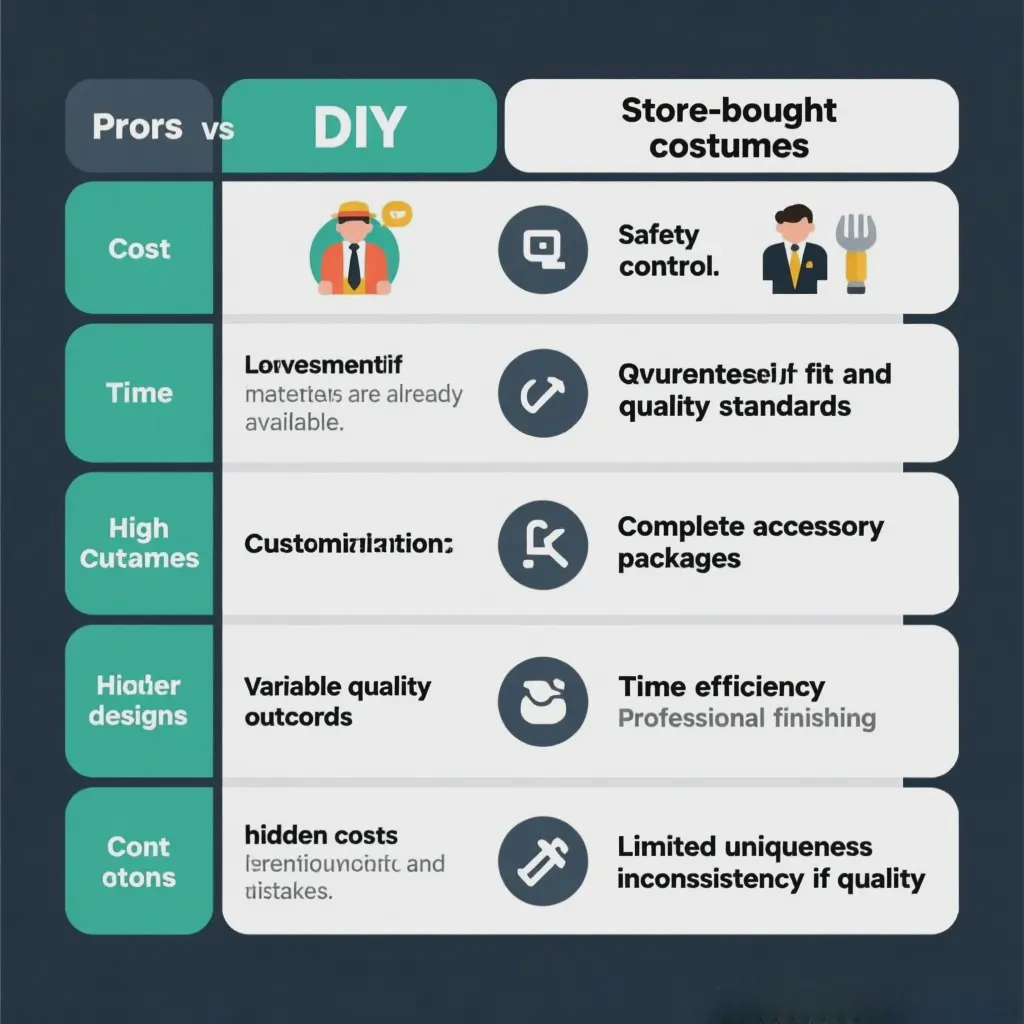
Consider these factors in your decision:
Choose DIY When:
You have specific creative ideas not available commercially
Budget is a primary concern (savings of 50-70% are common)
You want to involve your child in the creation process
You need specific safety modifications
You have basic sewing or crafting skills
Choose Store-Bought When:
Time is limited, and convenience is valuable
Your child wants a specific licensed character
You prefer professionally finished details
You lack crafting confidence or supplies
You need costumes for multiple children
According to craft industry surveys, 65% of parents who make costumes report higher satisfaction with the final result, though they also note it requires 3-5 times more time investment than purchasing ready-made options.
Conclusion
Choosing the perfect Halloween costume for your child ultimately comes down to finding the sweet spot between their imaginative desires and practical safety considerations. By prioritizing proper fit, visibility, age-appropriateness, and comfort, you can ensure a Halloween experience filled with joyful memories rather than preventable mishaps. Remember that the best costumes often reflect your child's genuine interests while allowing them to move, see, and breathe comfortably throughout an evening of trick-or-treating adventures.
[External links recommendation]:
A Parent's Easy Guide To Choosing Halloween Costumes For Kids
6 Great Questions to Help Your Media-Savvy Child Choose a Halloween Costume

